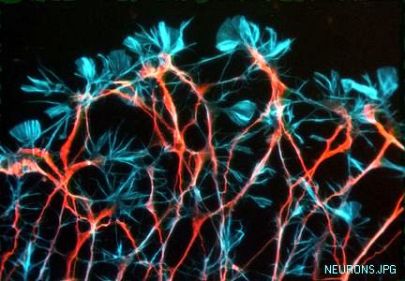
Jill Bolte Taylor
BREAKING up is hard to do especially when it comes to ingrained scientific worldviews.
Even after they have betrayed us, dogmatic beliefs still cling like burrs to our psyche and brains, despite all logic.
Recall the insistent flat earth and geocentric crowd, and creationist belief that the Earth is only ten thousand years old.
The list is very long. Science is littered with the remains of once sacred cows.
Until only a few years ago, for example, it was asserted that the brain cannot grow new cells —
when they are gone they
are gone for good!
Challenging this cliché that you can’t teach an old dog new tricks, science now confirms that in fact adult brain cells keep growing after all! H. P. Blavatsky made short work of the errors of science in explaining the occult teachings:
“The brain is the instrument of waking consciousness and every conscious mental picture formed means change and destruction of the atoms [neurons?] of the brain.” Yet, “in ordinary intellectual activity, moves on well beaten paths in the brain, and does not compel sudden adjustments and destructions in its substance.”
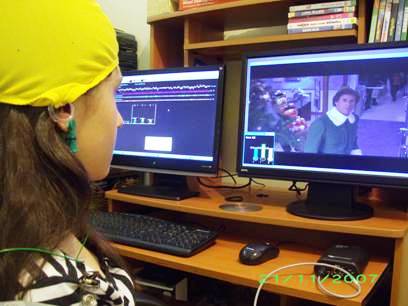
Neurofeedback
She then noted that a “new kind of mental effort calls for something very different — the carving out of ‘new brain paths’, the ranking in different order of the little brain lives.”
- The “Secret Doctrine” and its Study (P.G. Bowen) – Being extracts from the notes of personal teachings given by H.P. Blavatsky to private pupils.
“Memory has no seat, no special organ of its own in the human brain,” Blavatsky wrote in — it has seats in every organ of the body. The seat of memory, then, is assuredly neither here nor there, but “everywhere throughout the human body.”
- H. P. Blavatsky, Psychic & Noetic Action

Neuroplasticity
Modern studies in people recovering from stroke also provided support for neuroplasticity, as regions of the brain remained healthy could sometimes take over, at least in part, functions that had been destroyed.”
The ideas she presented were no less than a startling preview of our modern science’s newly understood doctrine of neuroplasticity.
Especially the “brain’s ability to reorganize itself by forming new neural connections throughout life.” This fact in occult science began to be recognized by modern science thanks to the findings of Dr. Paul Bach-y-Rita, called “the father of sensory substitution and brain plasticity.” These “now commonly accepted concepts, [were] novel ideas when [he] first conceived of them [70 years after Blavatsky] in the 1960’s.”
“In the 1960s, Paul Bach-y-Rita invented a device that was tested on a small number of people, and involved a person sitting in a chair, in which were embedded nubs that were made to vibrate in ways that translated images received in a camera, allowing a form of vision via sensory substitution.

Tree Bark
A musician needs his instrument, a painter her canvas. This requirement of a physical material vehicle is explained in The Secret Doctrine‘s first Fundamental Proposition: “…it is only through a vehicle of matter that consciousness wells up as ‘I am I,’
a physical basis being necessary to focus a ray of the Universal Mind at a certain stage of complexity.
A central nervous system connected to a physical brain and body are indispensable to complete our human evolutionary experience. Just as the invisible “zeros and ones” of a digital software program, for example, must be connected to a physical computer or they cannot be read or used.
The brain is such a complex thing, both physically and metaphysically, that it is like a tree whose bark you can remove layer by layer, each layer being different from all the others, and each having its own special work, function, and properties.
– H. P. Blavatsky
(Transactions, Appendix on Dreams)
The world of brain science was forever changed. Yet, “the scale of change [in the brain] is much smaller than what goes on during the critical period of development,” said a study co-author Elly Nedivi, a neuroscientist at the Massachusetts Institute of Technology (MIT) —
but the fact that it goes on at all,
is earth-shattering.
The truth is that neuroscientists today are completely baffled by how the brain is able to organize itself so perfectly.
Yet, the word “science” comes from the Latin word “scire” which means to know. “Science” is supposed to be a systematic, organized way of investigating the world. The catch is when specialized learning turns into a dogmatic worldview, it then becomes an end-in-itself — distorting what might have resulted in a more holistic truth.
With persistent reference to occult science Blavatsky insisted (The Secret Doctrine 1:14), that “consciousness is inconceivable to us apart from change,” and, “motion best symbolises change, its essential characteristic.”
The Miracle of Brain Organization
Any variations in brain and intention will invariably alter how our inner intelligence is expressed, which also opens up numerous possibilities for our most important evolution, our future spiritual development.
As William Q. Judge wrote in The Ocean of Theosophy:
By living according to the dictates of the soul the brain may at last be made porous to the soul’s recollections; if the contrary sort of a life is led, then more and more will clouds obscure that reminiscence.
West Meets East
In the emerging science of neuroplasticity and growing brain cells, we’ve come full circle again — in this case back to Buddha, who maintained it is “thoughts” that reign supreme over the physical brain and body.
“All that we are is the result of what we have thought,” says the opening verse in the Dhammapada:-
ALL that we are is the result of what we have thought: all that we are is founded on our thoughts and formed of our thoughts. If a man speaks or acts with an evil thought, pain pursues him, as the wheel of the wagon follows the hoof of the ox that draws it.

And if our thoughts can and should grow, it follows logically that the medium through which they are expressed, the neurons (brain cells), should also grow.
But what is it that initiates and orchestrates these changes? Must it not be that actual “thought producer” — the soul-perceiver within everyone? Theosophy maintains there must be, in fact, a higher directing power
above the intellect and functional brain mind, that often accomplishes what might seem like miracles.
Scientists Study
Tibetan Monks
A clip taken from the History Channel documentary about a Buddhist monk of Tibet who some how mummified himself through meditation, and whose body has somehow been miraculously preserved.
Scientist set out to discover what happened and study the monks preforming meditation under scientific test conditions, with amazing results.
Brain Plasticity
Is there is a Master Planner working behind the scenes in our brain? One of the most convincing proofs of this is in the brains almost limitless resilience and capacity to adapt tand capacity to adapt to changing conditions, to heal itself and restore order in the body — from the inside out.
See: (How the human brain stays young even as we age)
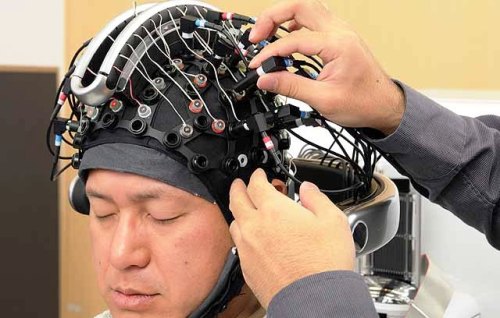
Measuring the Brain
The Jody Miller Story
“We are beginning to harness the brains incredible ability to invent itself, and then reinvent itself throughout life,” says the commentator in this video clip.
This is the true story of young girl, Jody Miller, who “leads an idyllic life for a nine-year-old girl.” Yet she underwent, when all other measures failed to cure her life-threatening illness, some of the most drastic surgery imaginable — half her brain was removed.
The Plastic Atom
Brain cells, like all substance, is built on the notion of “atoms” which were once thought to be “indivisible,” over the objections of H. P. Blavatsky in her Secret Doctrine.
“In 1888 HP Blavatsky’s theosophical masterwork The Secret Doctrine was published in both London and Washington. In my opinion it is probably the greatest work on genuine Occultism ever printed. On pages 519-520 of the first volume of that work there is a discussion regarding “the infinite divisibility of the atom”, at a time when the scientific world proclaimed that the atom was solid and indivisible, comparing it with a miniature billiard ball.”
THE INFINITE DIVISIBILITY OF THE ATOM: theosophical perspectives by Clive Bellgrove

That reductionist view of atoms changed completely in the first few years of the 20th Century. The idea of rigidly unchangeable brains may well have been a stubborn carry-over from the earlier view about atoms, and had simply not been challenged until recently. It’s ironic how similar the words “neutron” and “neuron” are.
Laboratory scientist Dean Radin describes the relationship between mind and body as seen through both Eastern and Western sciences:
If West meets East, could science verify our deep union with the universe that mystics have been talking about for thousands of years?
Eastern Science
“Gain Siddhis for thy future birth.”
The Fickle Atom
The illusion of solid matter “was shattered in 1897,” writes David Pratt, in his article The Infinite Divisibility of Matter,”with the discovery of the electron, the first subatomic particle”…
the ‘uncuttable’ had been cut. This was followed by the discovery of the proton in 1911 and the neutron in 1932, the two particles that make up the atomic nucleus.
In the decades that followed, subatomic particles began to proliferate like bacteria, and today over 200 are known.
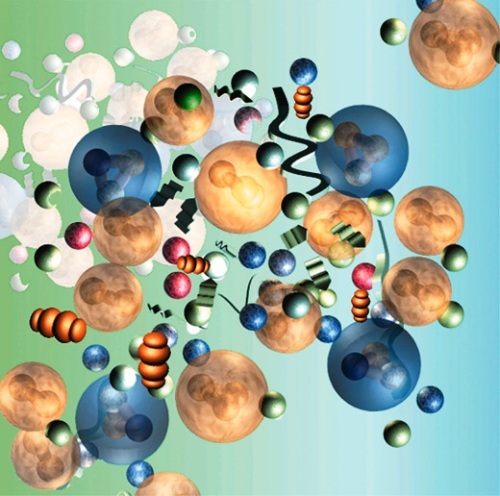
Neutrons & Protons
“This is sufficient to show how absurd are the simultaneous admissions of the non-divisibility and elasticity of the atom. The atom is elastic, ergo, the atom is divisible, and must consist of particles, or of sub-atoms. And these sub-atoms? They are either non-elastic, and in such case they represent no dynamic importance, or, they are elastic also; and in that case, they, too, are subject to divisibility. And thus ad infinitum. But infinite divisibility of atoms resolves matter into simple centres of force, i.e., precludes the possibility of conceiving matter as an objective substance. This vicious circle is fatal to materialism.”
- H. P. Blavatsky, The Secret Doctrine 1:519
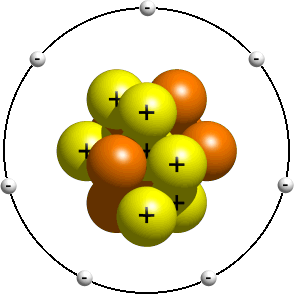
Atoms
“They are either non-elastic, and in such case they represent no dynamic importance,” Blavatsky went on to say, “or, they are elastic also — and in that case, they, too, are subject to divisibility. And thus ad infinitum.”
“But infinite divisibility of atoms resolves matter into simple centres of force, i.e., precludes the possibility of conceiving matter as an objective substance.”
This vicious circle is
fatal to materialism.
– H. P. Blavatsky
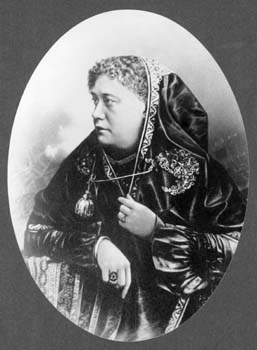
Helena P. Blavatsky

